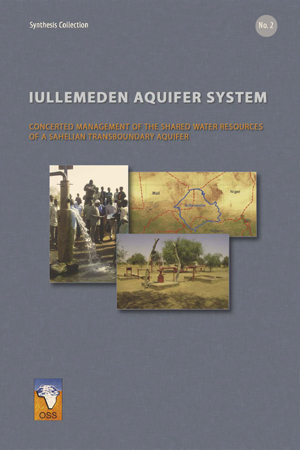Author: OSS
Published in: 2008
Project:
Theme: Water resources management
Type: Studies and reports
ISBN: 978-9973-856-28-9
Country:
The lullemeden Aquifer System, shared by Mali, Niger and Nigeria, designates in the framework of this study a group of sedimentary deposits containing two major aquifers: the lntercalary Continental (IC) at the bottom and the Terminal Continental (TC) at the top.
IAS water resources are considerable but their renewal is limited. In the last 30 years withdrawals have increased from 50 million m3 in 1970 to 1 80 million m3 in 2004, mostly as a result of a high rate of demographic growth. The number of water points (boreholes, wells) has gone from a few hundreds in the 1940-1950 period to some 17,200 in 2007.
At present, these water resources are threatened by overexploi tation, quality degradation, and the effects of climate variability and change. The first simulations run with the IAS mathematical model identified the zones exposed to the risk of overexploitation. They also allowed the quantification of the contribution of groundwaters to the annual flow of the Niger River.
The riparian countries recognized that there is no structure dedicated to the IAS that could give them guidance and assistance to define and monitor the implementation of a strategy for a concerted management of transboundary aquifers. Convinced that no country could single handedly mitigate or eliminate the consequences of those transboundary risks, the countries agreed to create and set up the structure of a consultative mechanism to allow a better coordination of the concerted management of the IAS resources.
Acting to encourage and facilitate member activities in the framework of transboundary projects, and using its approach and its dynamic and multidisciplinary method for the concerted management of transboundary aquifer, OSS initiated the IAS and is overseeing its implementation.
